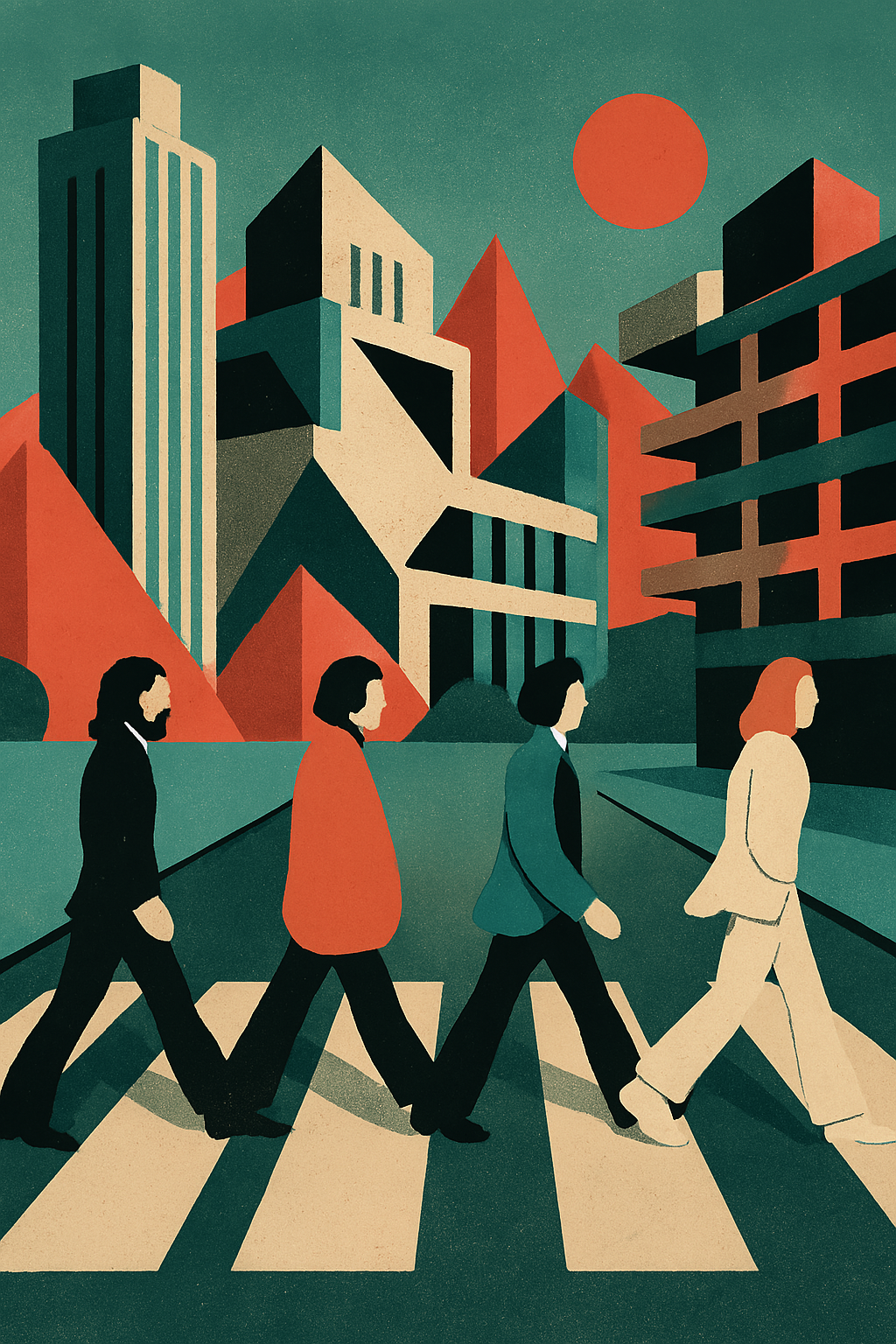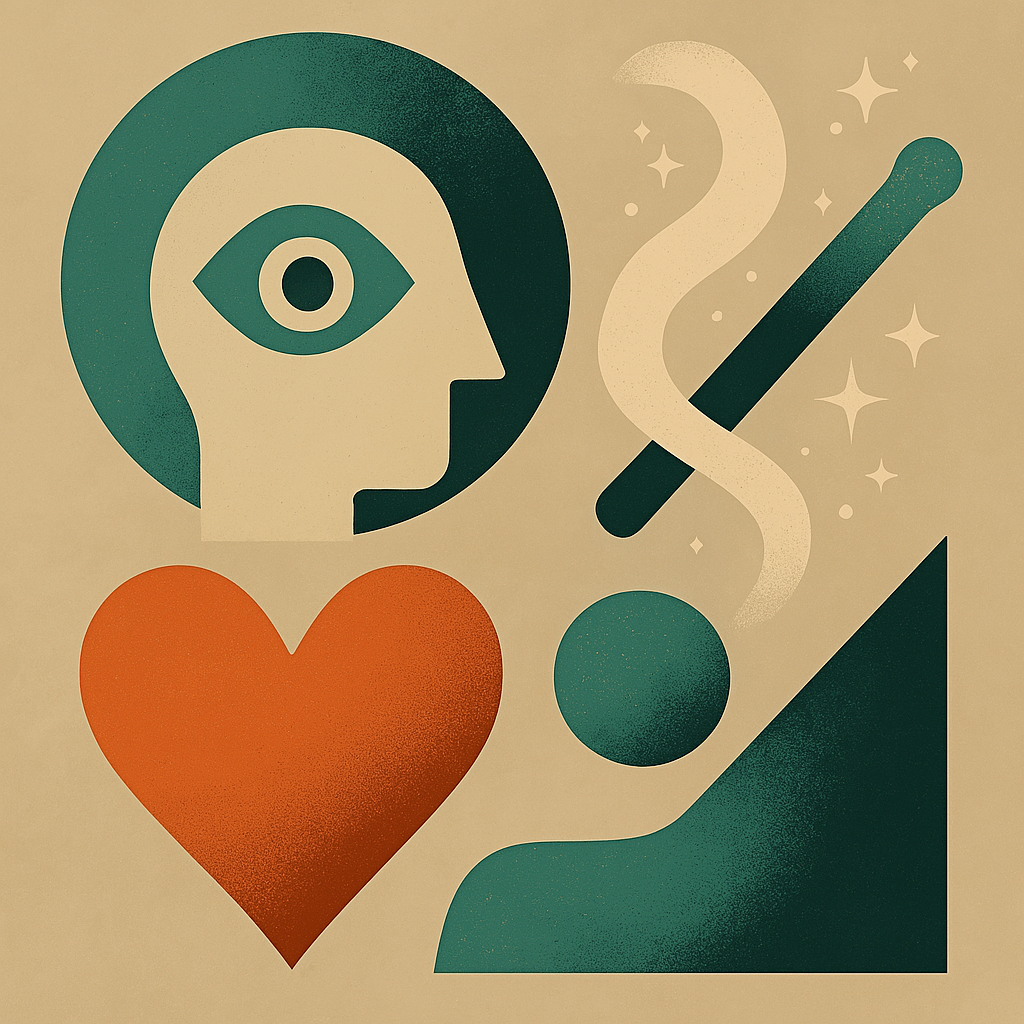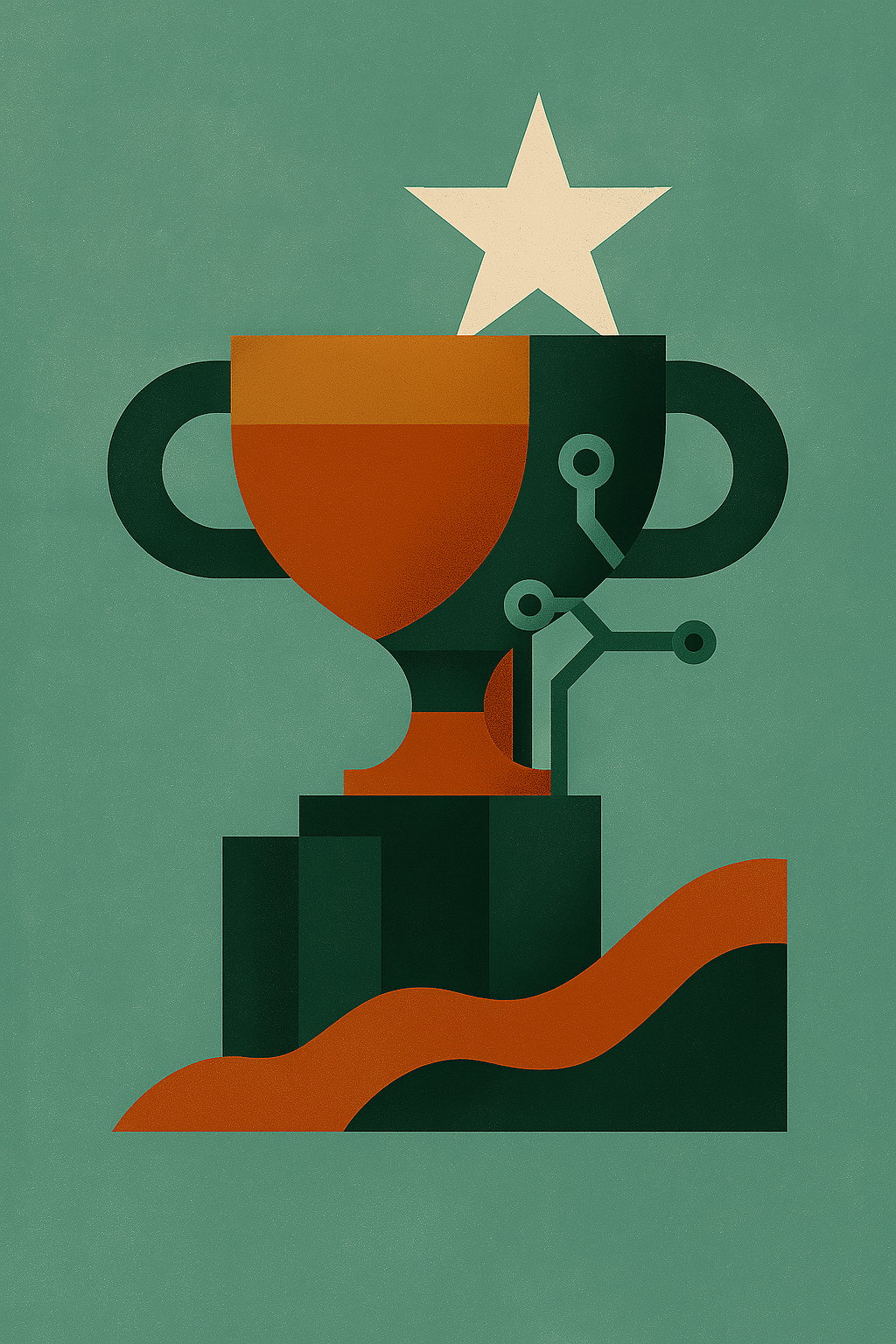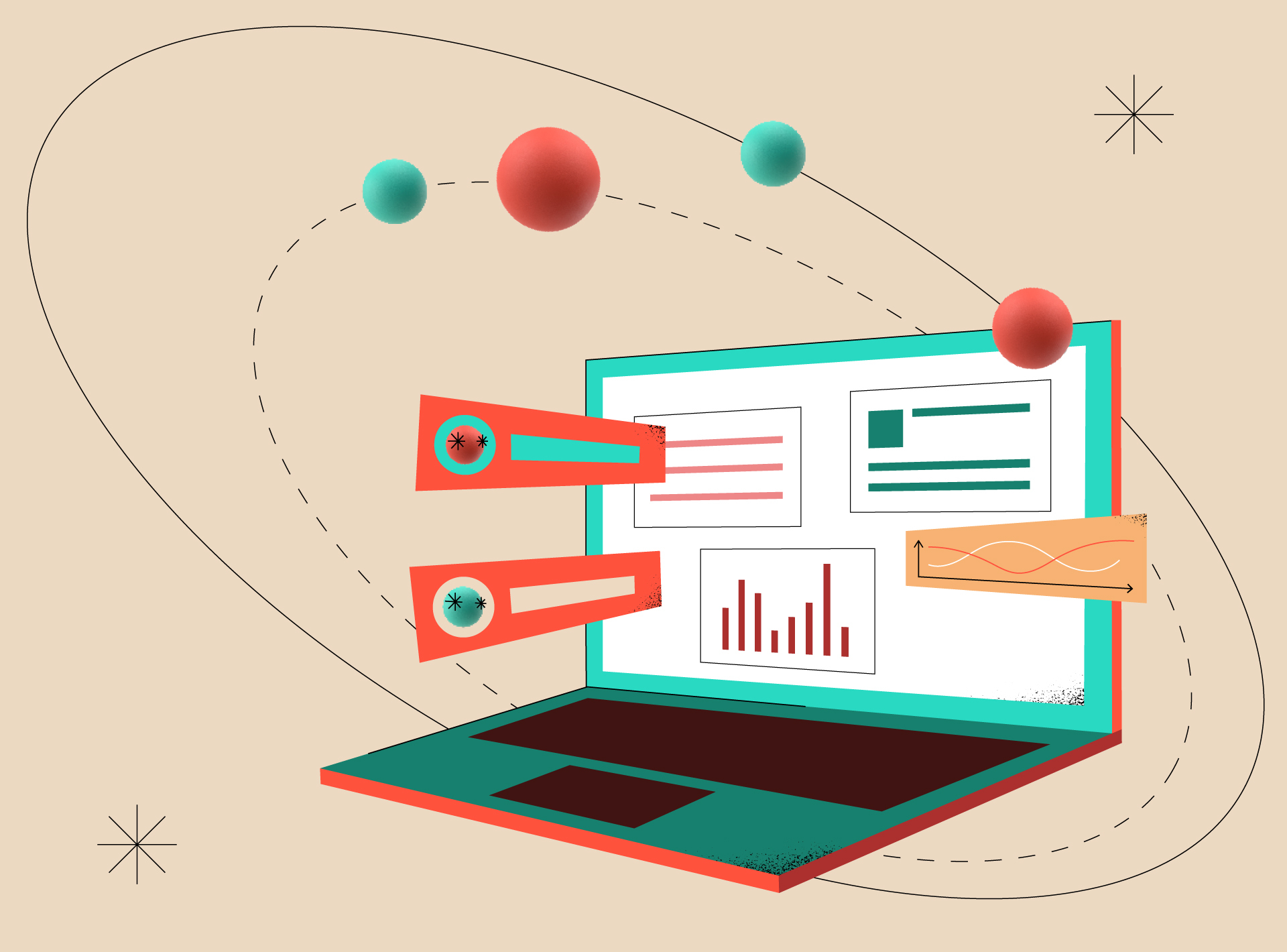“Today, we use the least AI we will ever use.” That line from Olaf Lenzmann neatly sums up where we are in the creative landscape with the growing presence of artificial intelligence. Far from hiding out in software houses, AI is now a full-fledged player in the branding landscape – from ad campaigns to brand messaging, turning what used to be manual, time-heavy tasks into near-instant operations. In B2B communication, it’s not just a gadget or distant trend; it’s becoming a practical tool that can transform how we develop ideas and engage audiences, often in ways we never imagined before.
AI-enhanced creativity: from The Beatles to The Brutalist
Two recent examples capture the growing influence of AI in the creative world. First is The Beatles’ “Now and Then,” a track brought to life with the help of AI that cleaned up hard-to-hear vocals recorded decades ago. It stirred a debate among fans worried that technology might overshadow the band’s original essence. Yet the final product struck a chord, earning the creators the most prestigious music award – a Grammy.
Then there’s “The Brutalist,” a film that relied on AI to refine actors’ Hungarian accents (no small feat given how famously tricky the language is) and generate architectural designs for a bold visual look. While some questioned whether these AI touches detract from the artistry, others saw it as a savvy way to work around tight budgets and timelines. The buzz alone hinted that mixing AI into a project can grab attention – whether people applaud or question it. Of course, this also raises the question of how to “validate” AI-infused work when awards have traditionally celebrated human creativity.
For B2B branding teams, these stories may seem worlds apart from everyday concerns like lead generation or ROI. However, the underlying ideas are the same. First, when used thoughtfully, AI can spark new forms of creativity that help a project stand out and even receive valuable validation and exposure, for example through creativity awards. Second, looking at the landscape of creative technologies, it doesn’t seem like we’re getting away from AI, which means that it will also be a part of how we validate our creativity. Instead of seeing AI as a gimmick, brands can approach it as a practical tool that makes a campaign more dynamic or memorable.

Finding the right balance: The human–AI dynamic
While AI brings plenty of benefits – speed, data insights, near-limitless variations – it’s still not a stand-in for human creativity. In “Now and Then,” AI cleaned up the audio, but it was the band’s choices about arrangement and performance that carried the emotional impact. Similarly, in “The Brutalist,” the film’s direction didn’t come from an algorithm; AI was just used to resolve specific hurdles and enhance the visuals.
For B2B marketers, a parallel approach can work well: let AI handle certain time-consuming or repetitive tasks, like generating multiple draft headlines or analyzing competitor content. However, the big decisions – what truly resonates with target audiences and which angle feels most authentic – belong to and are best made by people and agencies who help understand the nuances of communication in the B2B industry. A great campaign usually stems from a blend of human intuition, emotional intelligence, and just the right amount of “technology fairy dust”. Particularly when we’re starting to see more and more of an emotional branding approach emerging in B2B communication. Why? Colin Gray points out that simply because it stays with B2B audiences longer than data-oriented messaging, which is crucial because B2B purchase paths are lengthy and involve multiple decision-makers. Data alone rarely cements a deal; emotional resonance helps your brand stay top-of-mind until the buyer is ready. Ultimately, by combining AI-generated insights with human creativity, B2B marketers can create campaigns that resonate and drive business results.
Evolving criteria for creative validation
The fact that AI is increasingly behind the scenes of award-winning work means that judging criteria will keep shifting. Some awards have launched new categories to highlight technology-driven campaigns. For B2B brands in particular, this could be a prime opportunity. If a campaign uses AI not just for novelty, but to solve real business challenges – like delivering personal, relevant messaging at scale – it has a good chance of turning heads.
Of course, awards still revolve around originality and impact. The difference now is that B2B brands can leverage AI to produce campaigns that go beyond standard whitepapers and demonstrations. With the help of branding guardian angels they can deliver fresh visuals, more personalized storytelling, or faster optimization, all of which could impress judges and audiences alike. And if the campaign stands out enough to win, it confirms that creativity can be a major differentiator even in a specialized, highly technical markets.

Why awards matter in B2B?
In a field that’s traditionally seen as pragmatic and data-driven, there’s often a question of whether glamorous ad awards, often filled with emotional and bold campaigns, hold any real value. The truth is, they can play a major role in elevating a B2B brand’s reputation. Winning or even just getting shortlisted for a respected award sends a clear signal to potential clients that a company isn’t just another vendor – it’s a brand willing to push creative boundaries in a world where many messages look and sound the same.
Awards also attract fresh eyes. People outside brands’ usual circles – reporters, analysts, even prospective employees – who might not have discovered your brand otherwise. And for internal teams, recognition can be a powerful motivator, encouraging them to keep experimenting with new strategies and technologies. All of this can be particularly useful in B2B, where brand visibility and differentiation can be tougher to achieve.
Indeed, B2B is often about logic and facts, but there’s a strong emotional component to large-scale purchasing decisions, too. If a brand is clearly capable of thinking differently and taking bold steps, it can make that brand more appealing – even in markets that focus on specs and spreadsheets.

Making AI Work for B2B Greatness
If we truly are at the “lowest level of AI adoption” we’ll ever see, then it’s only going to become more common in creative processes. For B2B, that’s not a distant concept – it’s happening now. Brands are testing wild new ideas, refining their messages, and elevating quality, all with AI’s help.
The real key is remembering that these technologies are enablers, not replacements. They remove some grunt work, offer new angles, and speed up iterative testing – but they don’t inherently understand and grasp what moves a B2B buyer’s heart (and therefore budget). That insight still belongs to branding agencies who help B2B brands understand the messy, multi-stakeholder reality of brand communication.
AI can sharpen your story, but it’s human experiences and emotional hooks that make solutions truly memorable. B2B award committees, brand fans, and buying teams alike are looking for that blend of innovative tech and genuine empathy. Manage to deliver it, and you might see your brand rocket to the top of the shortlist – long before the 95% of would-be B2B customers even realize they’re ready to buy. And that’s an outcome worth putting in lights, with or without a robotic sidekick tapping away at the keyboard. In a world where technology is rewriting the rules daily, B2B brands that embrace AI’s potential without losing their creative spark stand a solid chance of not just keeping up, but leading the way.

